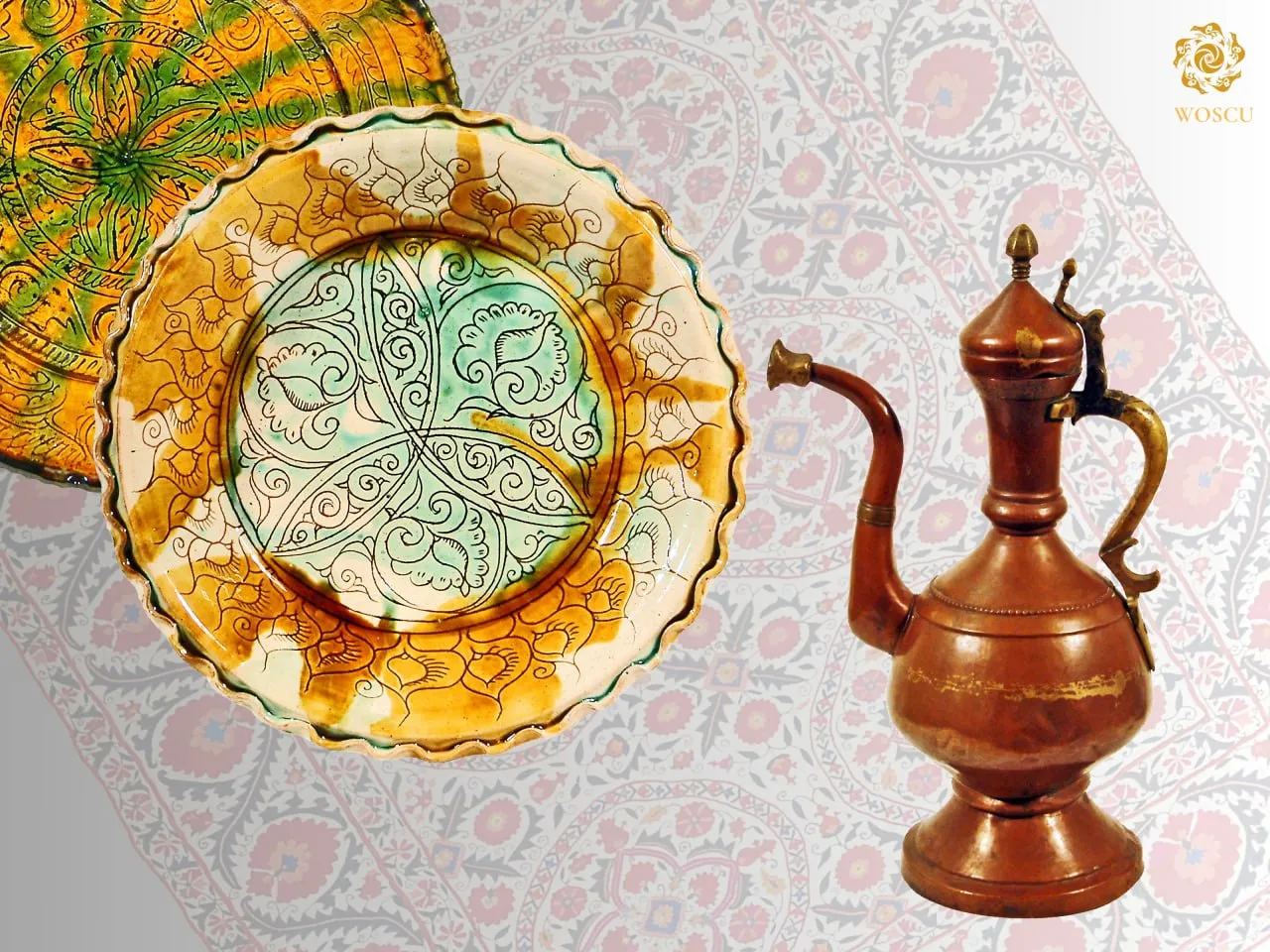
The cultural historian and librarian Dr Gustav Klemm (12 November 1802 – 26 August 1867), who assembled the Leipzig Museum’s founding collection, dreamed his entire life of a museum of the cultural history of mankind. His collection of nearly 15,000 objects was put together with this aim in mind. Among the pieces in his collection there was one item whose origin is given as Bukhara. It is a leather case for a drinking bowl.
Most of the currently existing Uzbek collection was selected by the Leipzig artist Gerd Thielemann. While studying graphic art at the Leningrad Institute. Repin from 1952 to 1957 he developed an interest in the traditional art of the peoples of the Soviet Union. As a collector, he paid special attention to ceramics - tableware and small plastic items.
There are men drinking tea, women embroidering, horse riders and potters, as well as figures from fairy tales and legends such as dragons or the ever-popular Hoja Nasreddin. He systematically built up his collection for 40 years. As a result the collection is outstanding in terms of its historical depth and complexity, the range of artistic techniques it displays, and its regional comprehensiveness. He visited the large art emporiums in all of the capital cities where he purchased objects that were on display at major exhibitions. His special passion for them led him to visit the artisans themselves. Repeated contact with artisans – even when their workshops were located in far remote villages – was something very important to him. He traveled a number of times to Uzbekistan, where he always found work of superlative quality.
The Leipzig Museum acquired his collection in stages starting in 1993. Even then his passion for collecting did not stop. After the reconstruction of the Grassi building in 2001 – 2005, a new permanent exhibition was planned. In the meantime an original Uzbek tea room had been added to the museum’s collection.
You can learn more about the topic in the book-album "Collections of the Federal Republic of Germany" (volume XI) in the series "Cultural Legacy of Uzbekistan in the World Collections".
The main sponsor of the project is the oilfield services company Eriell-Group.
